
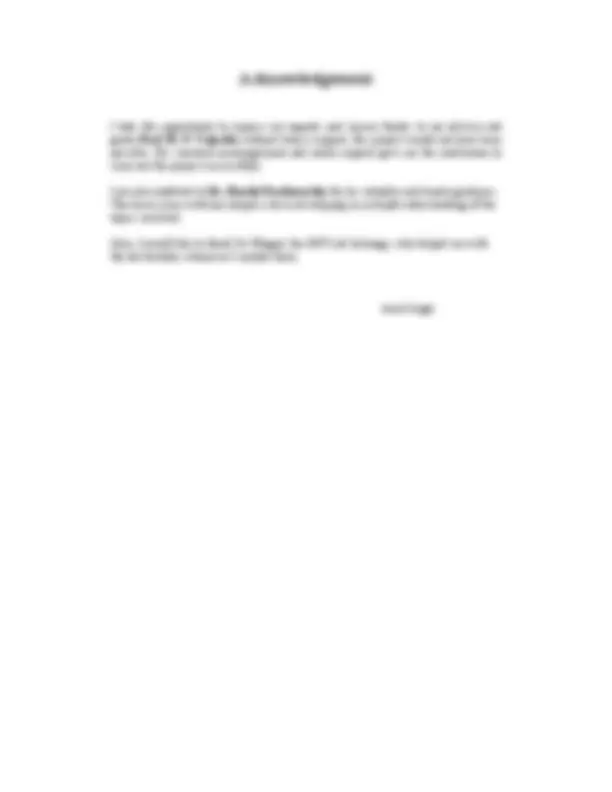
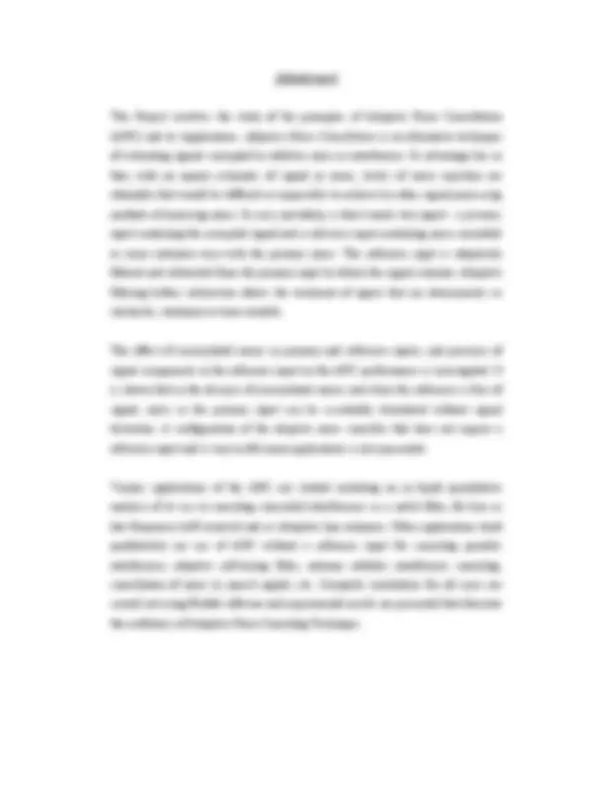
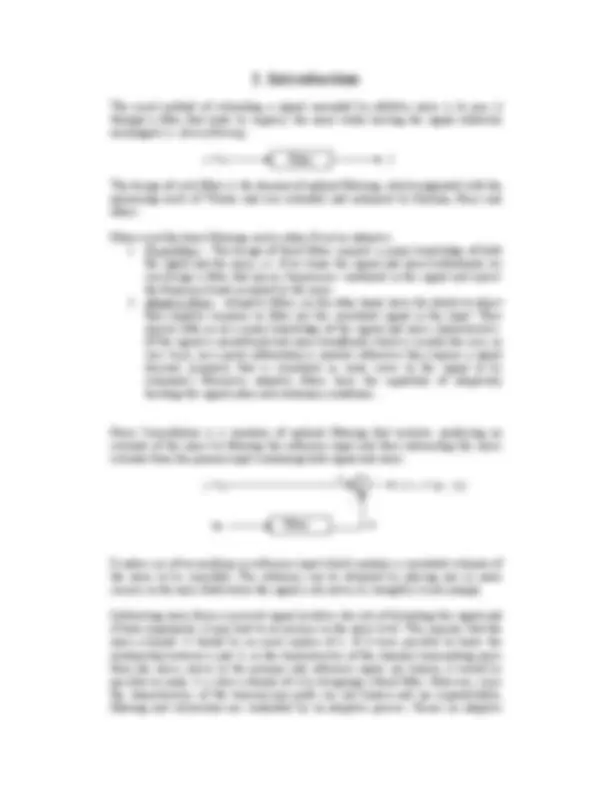
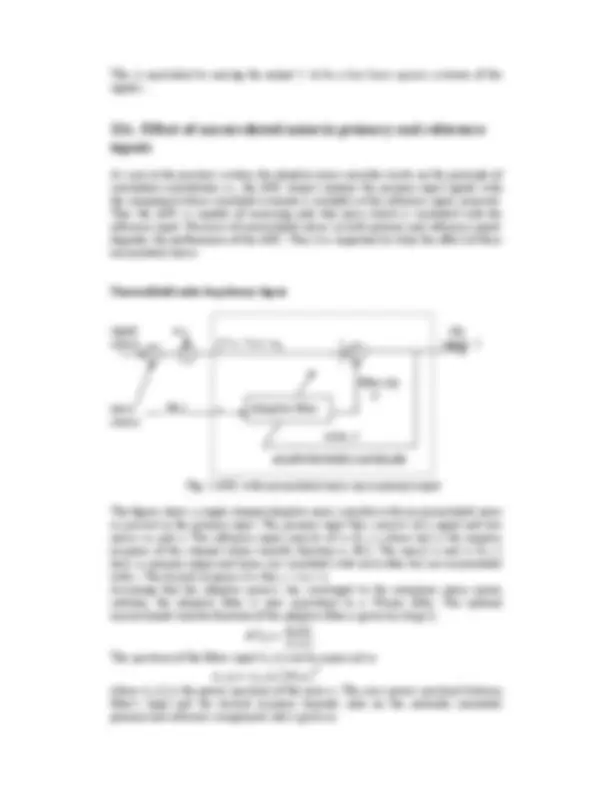
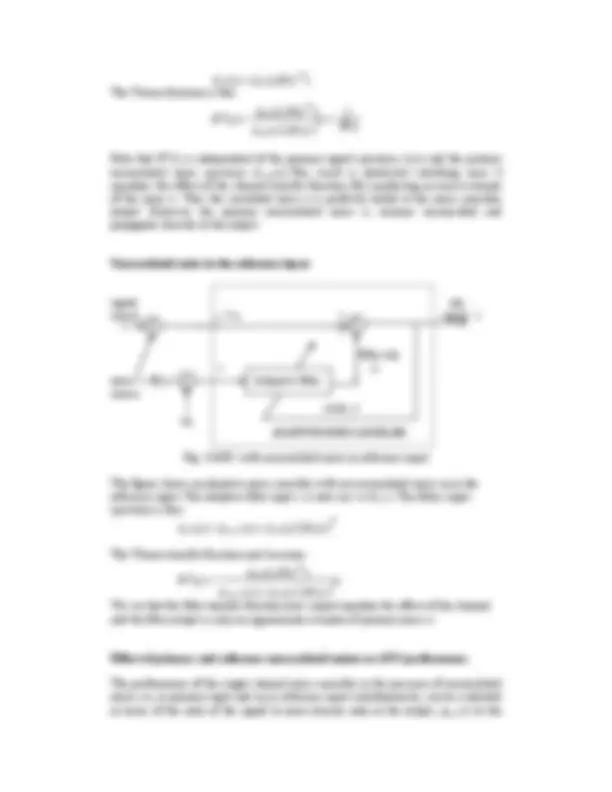
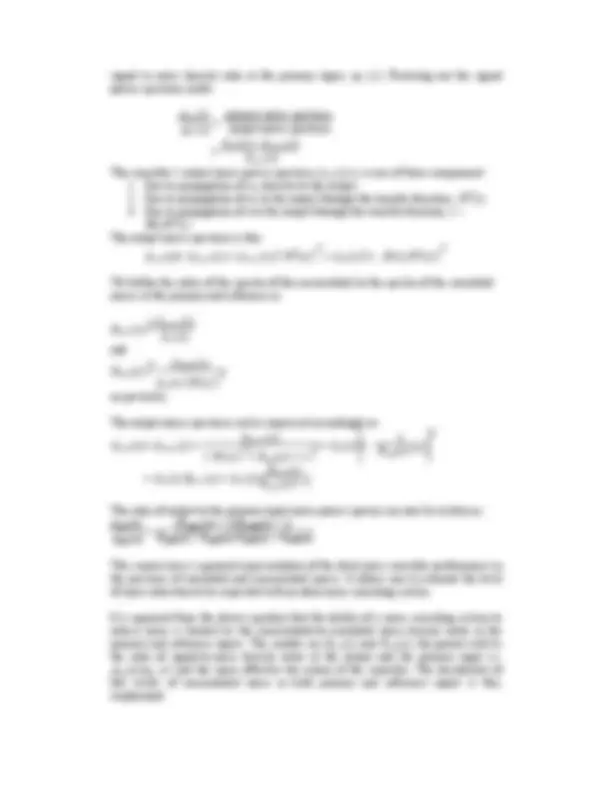
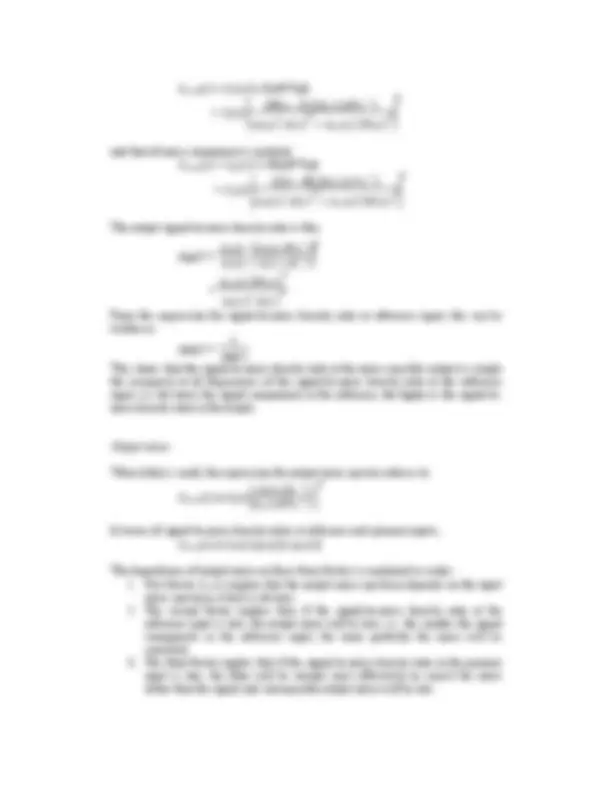
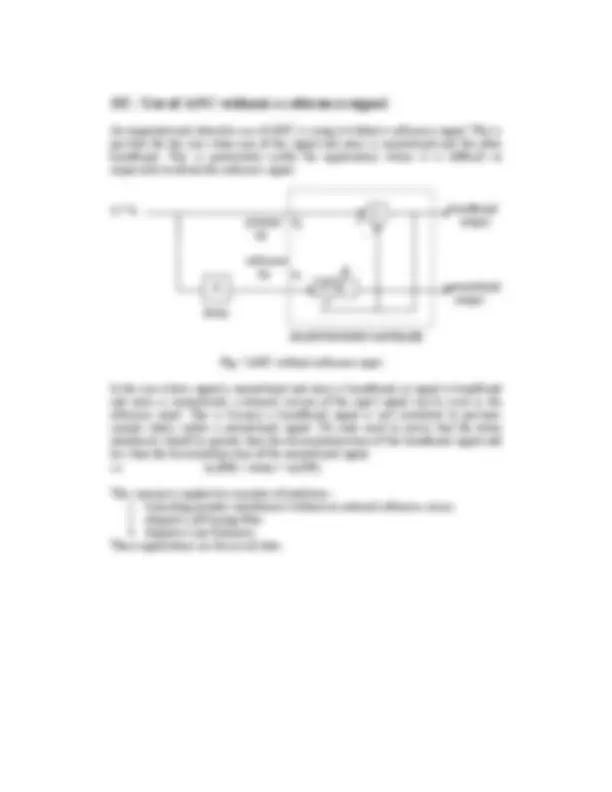
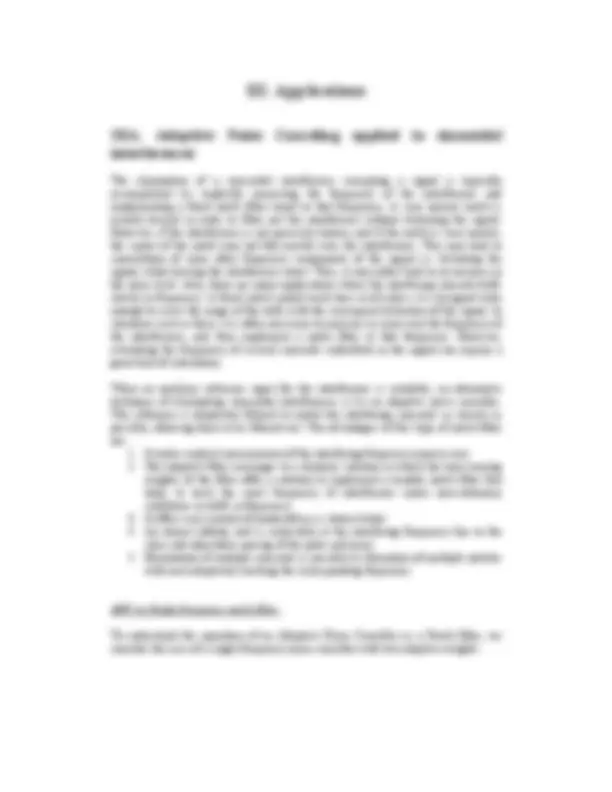
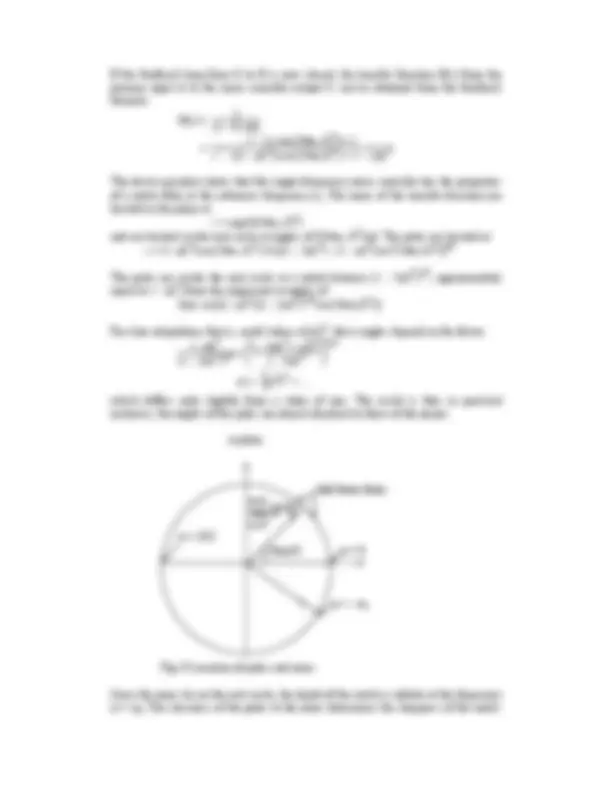
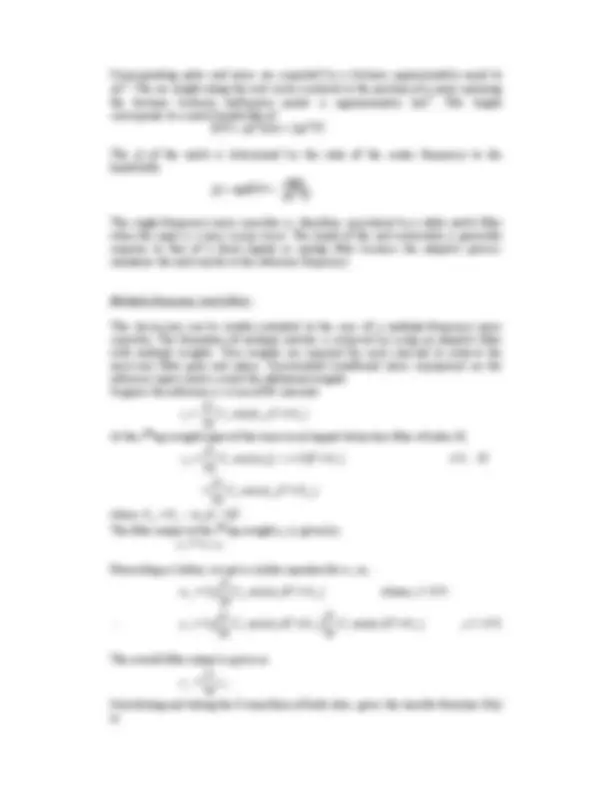
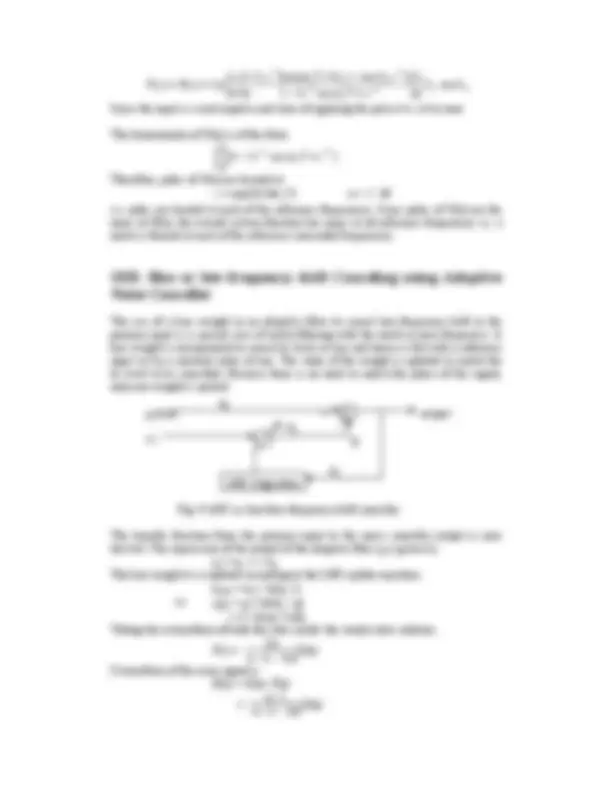
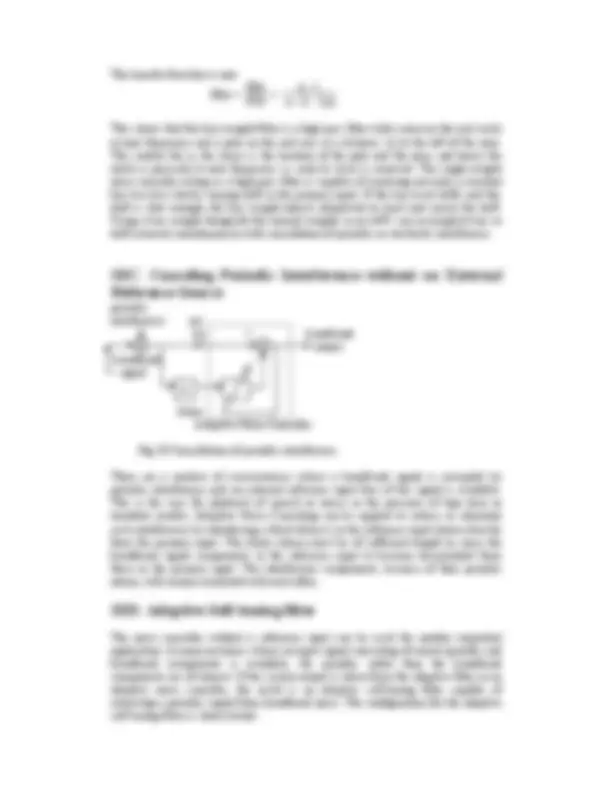
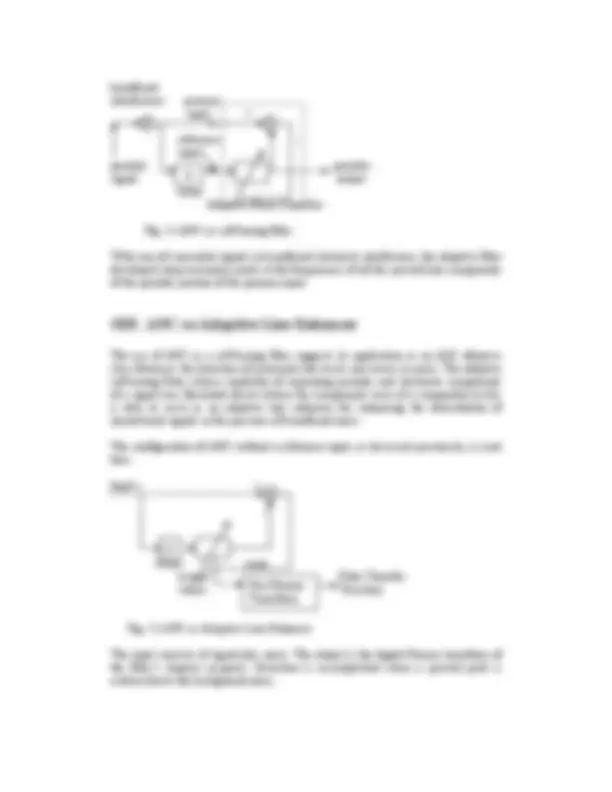
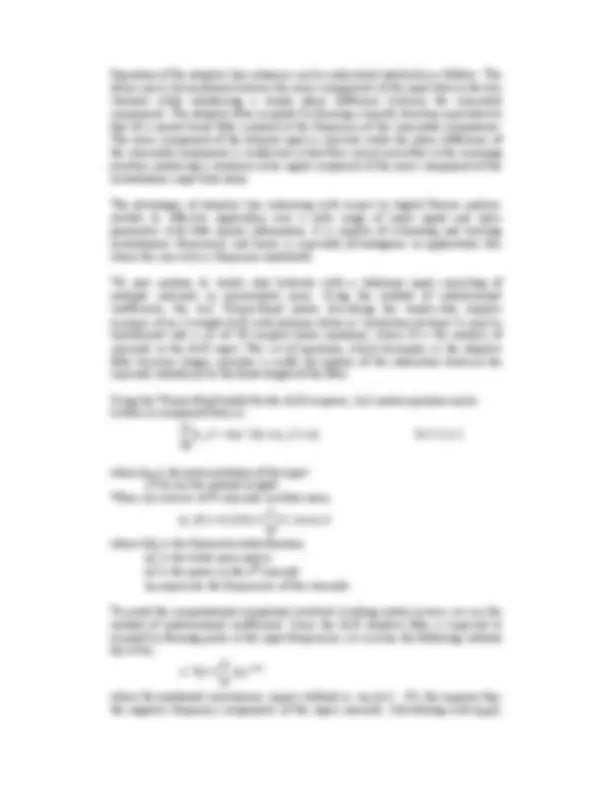

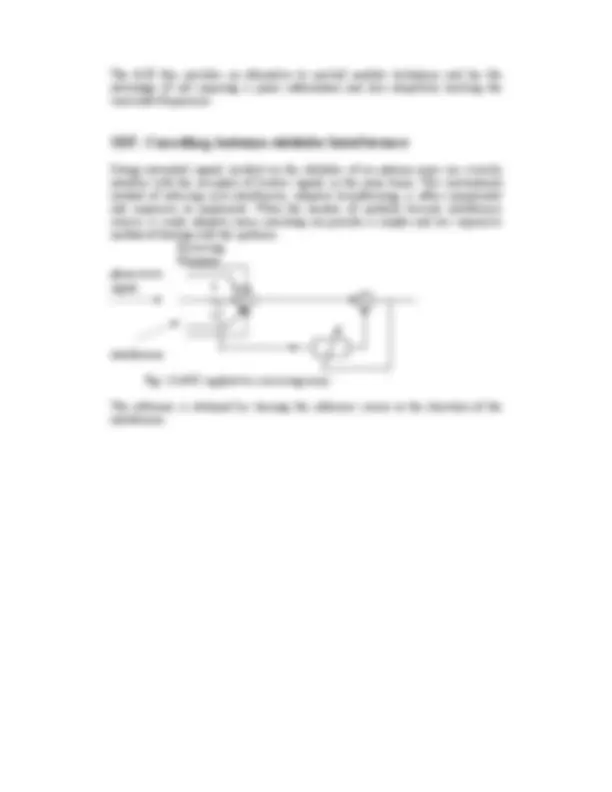
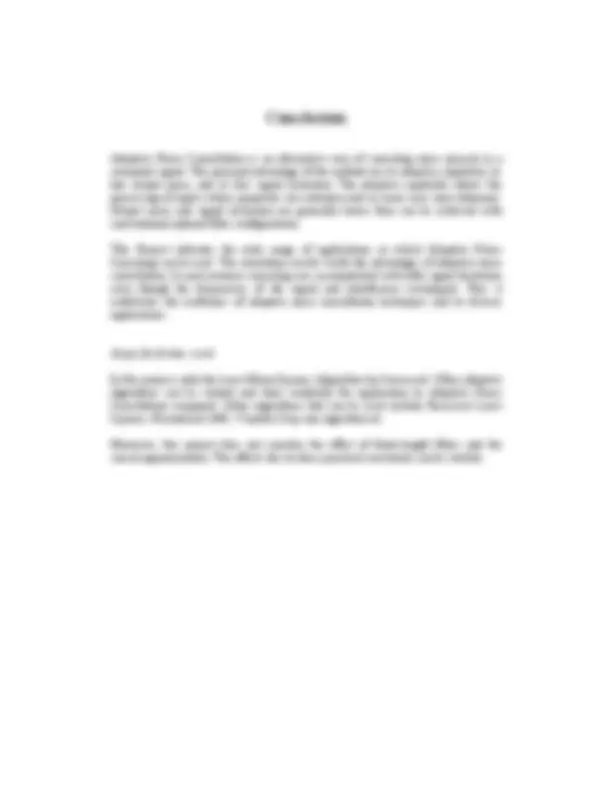
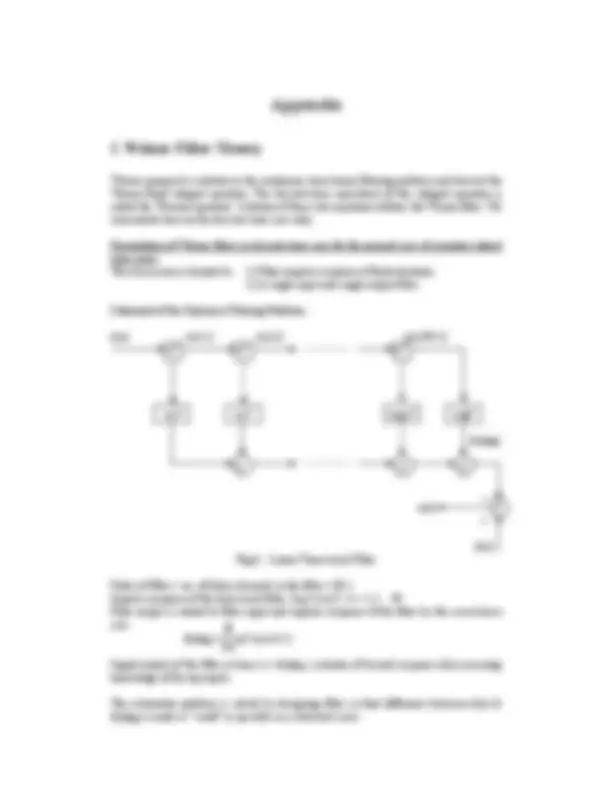
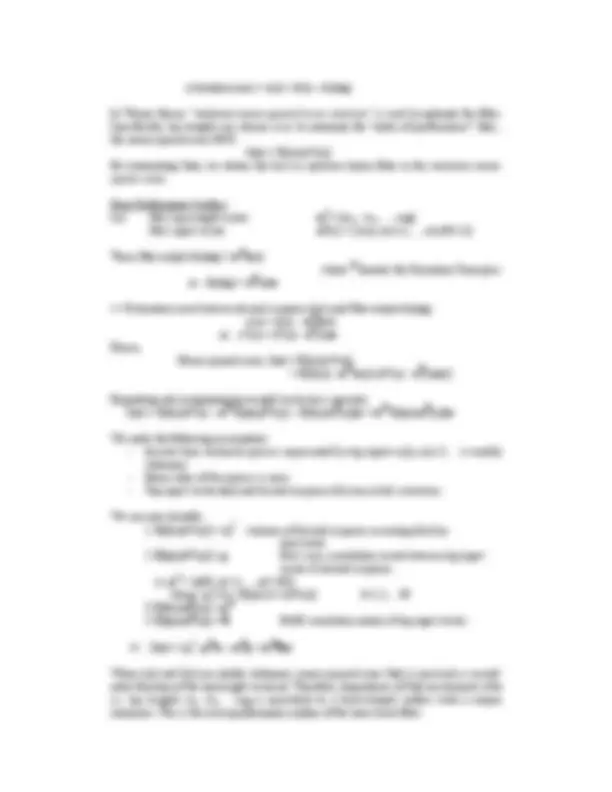
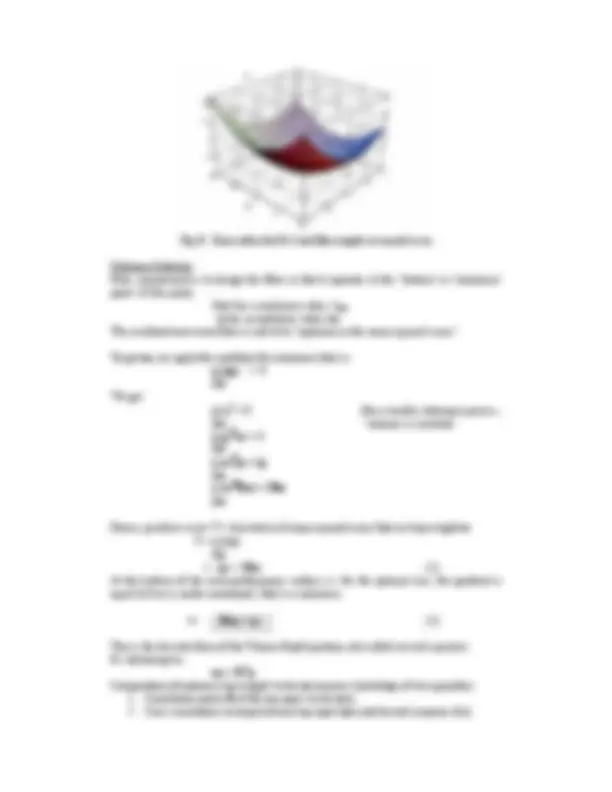
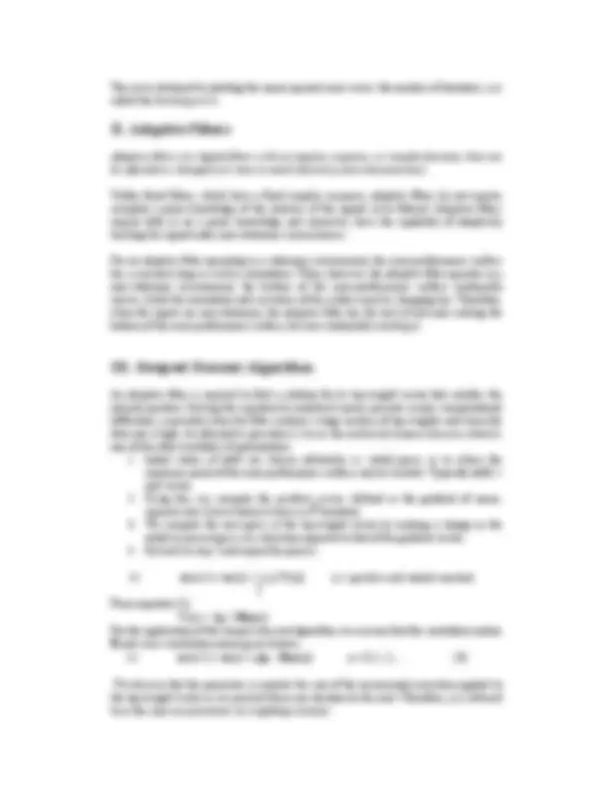
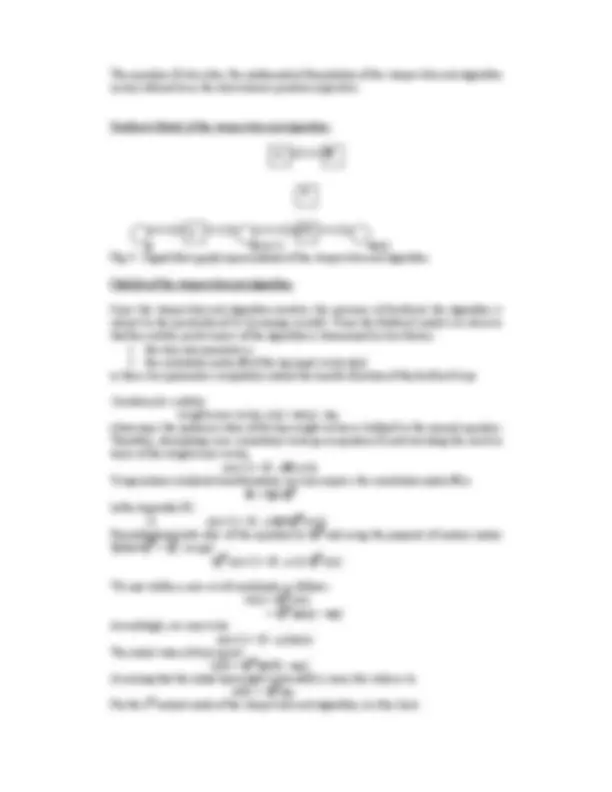
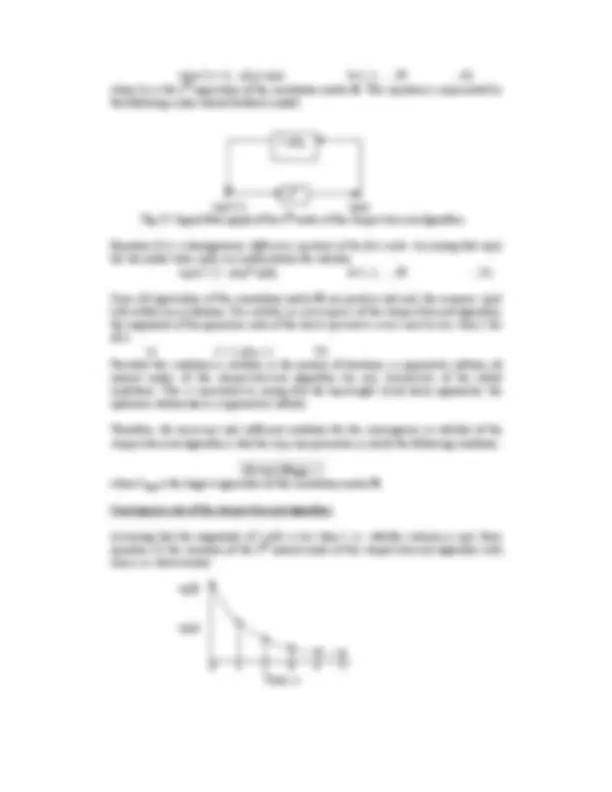
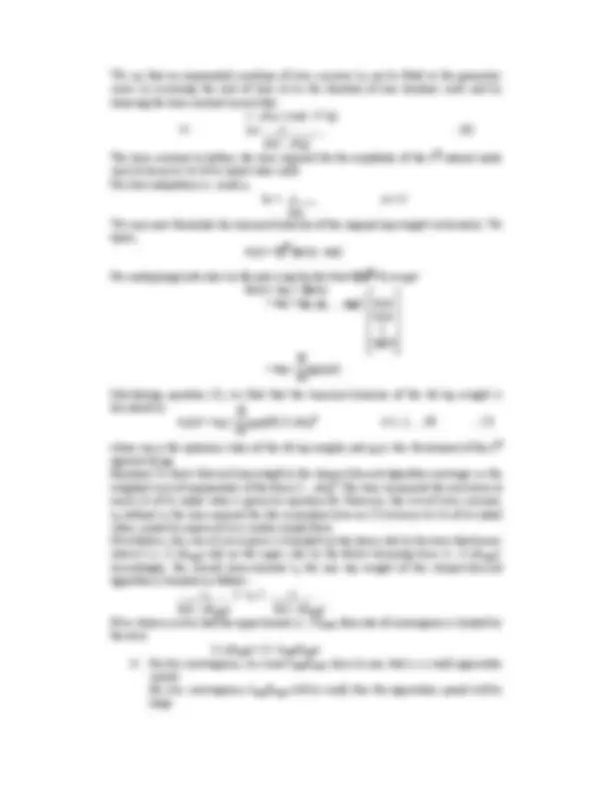
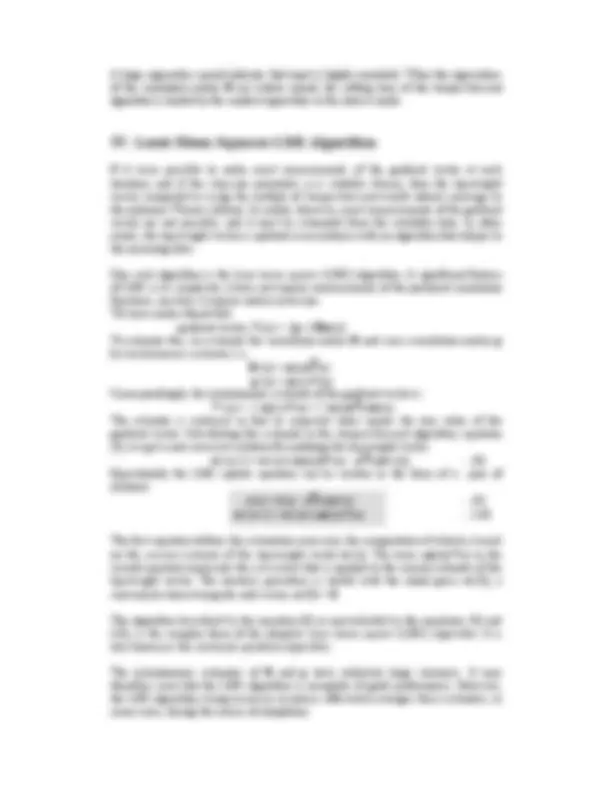
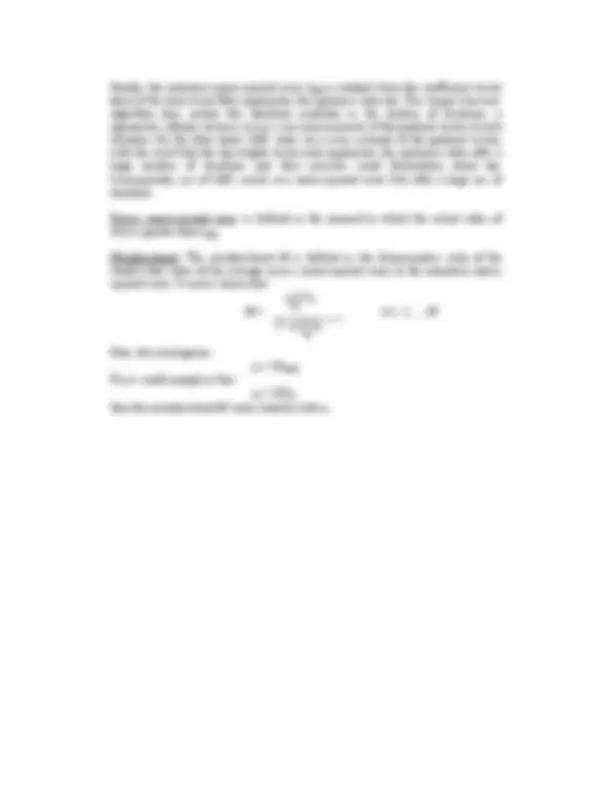
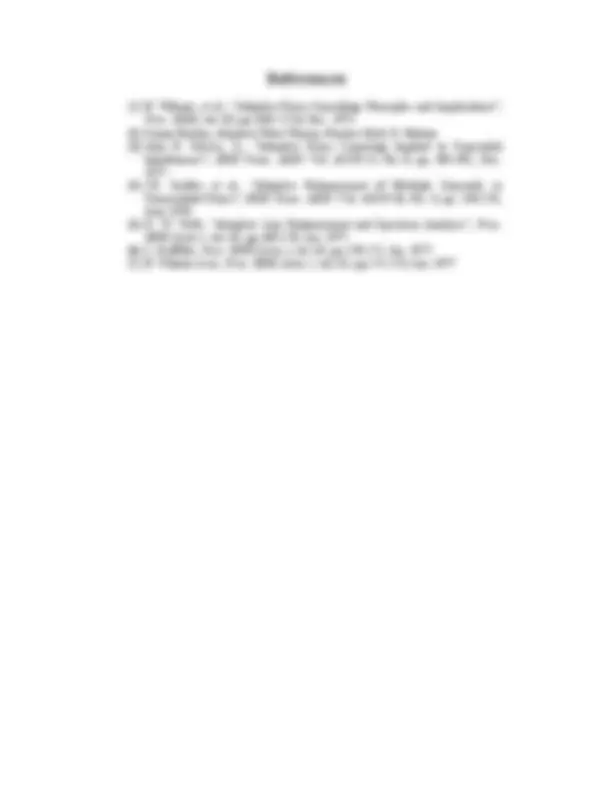
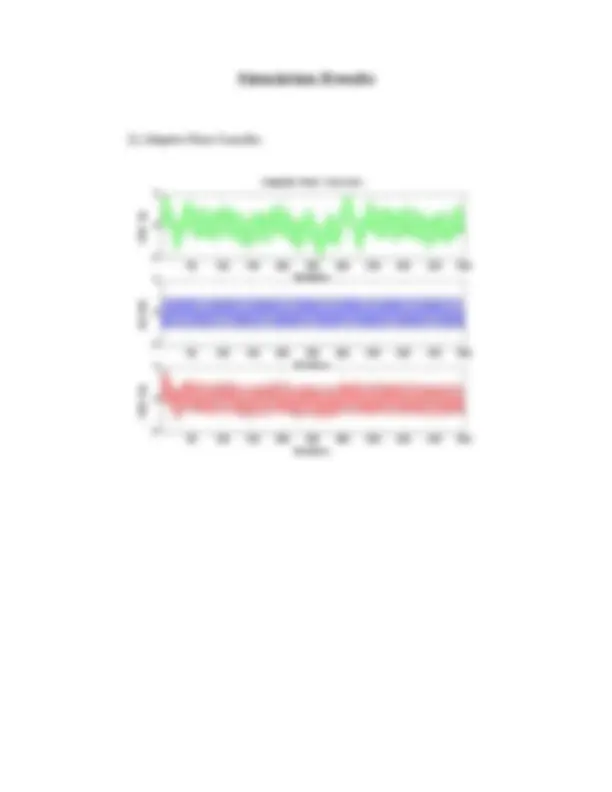
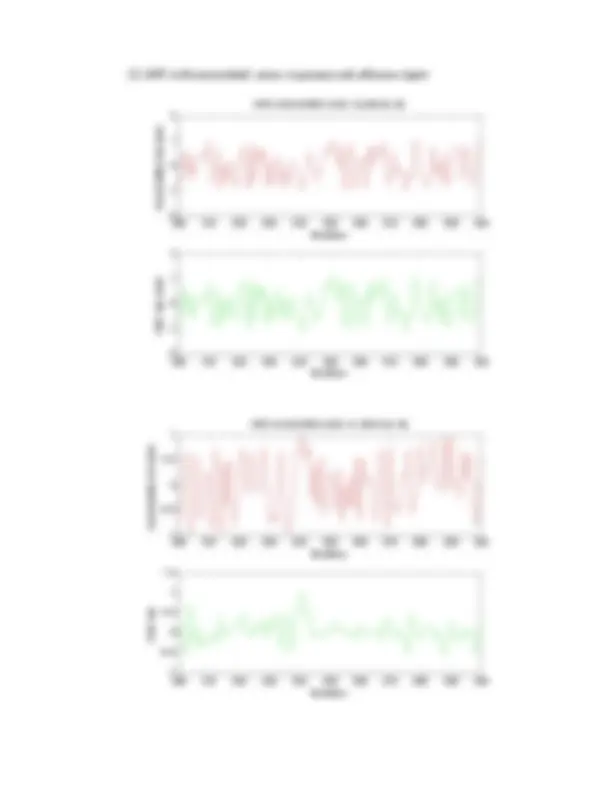
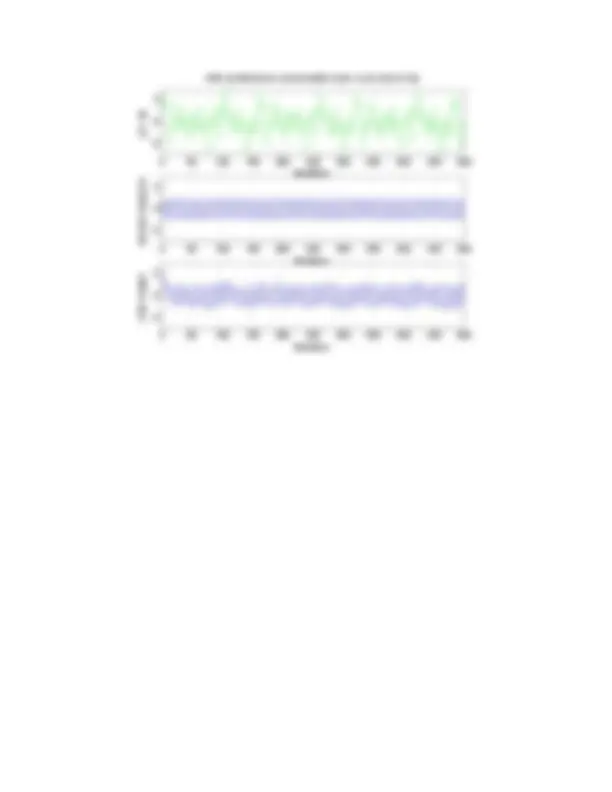
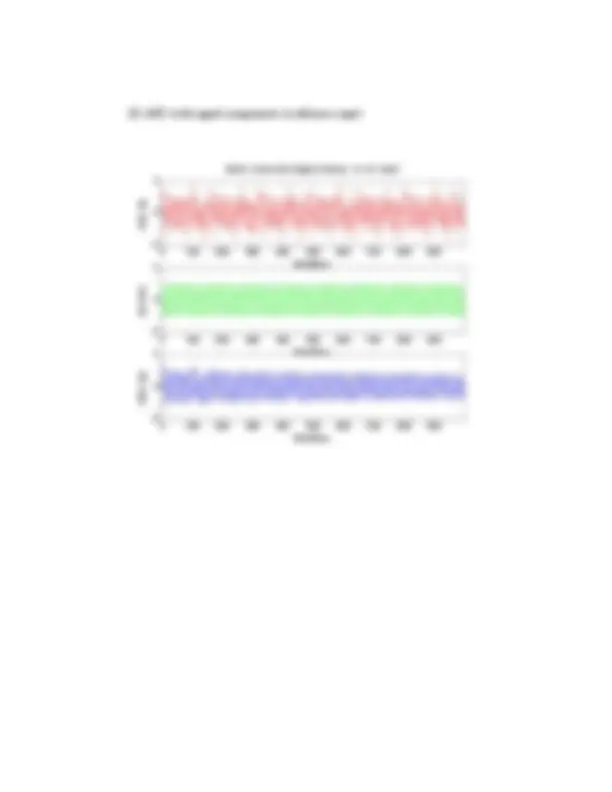
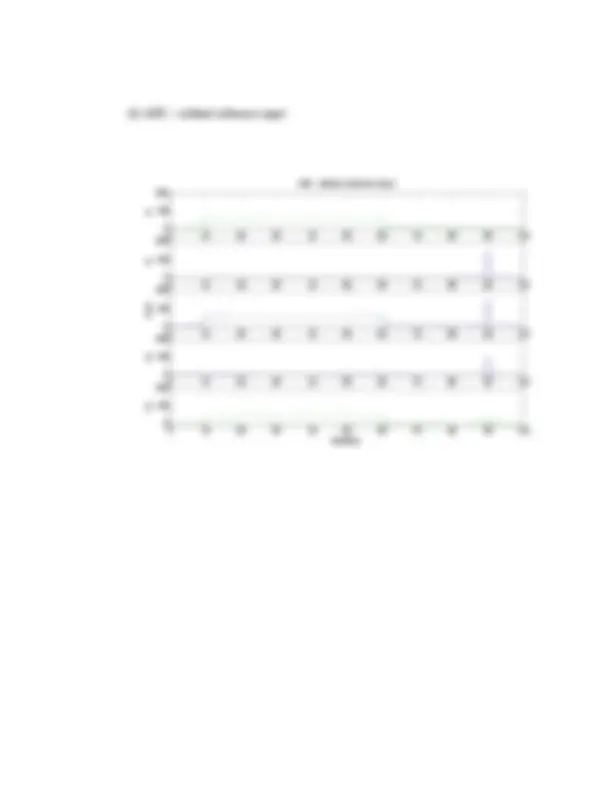
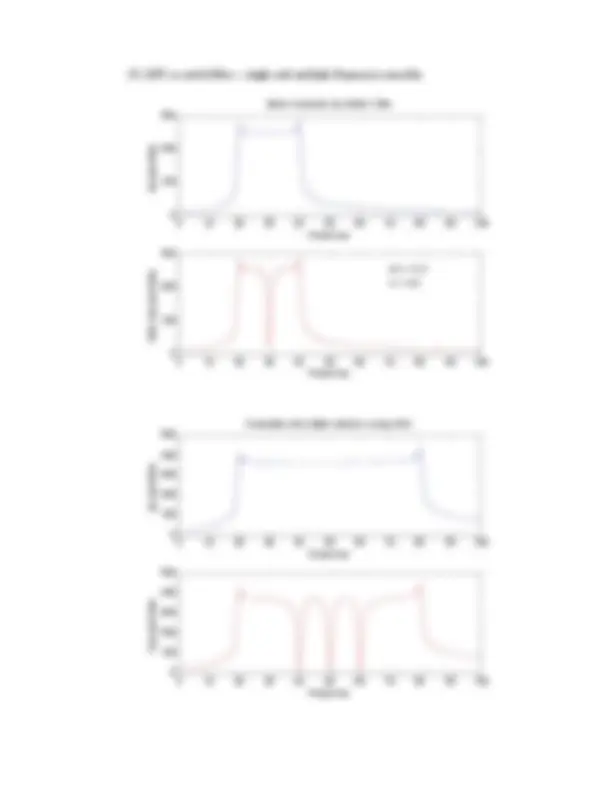
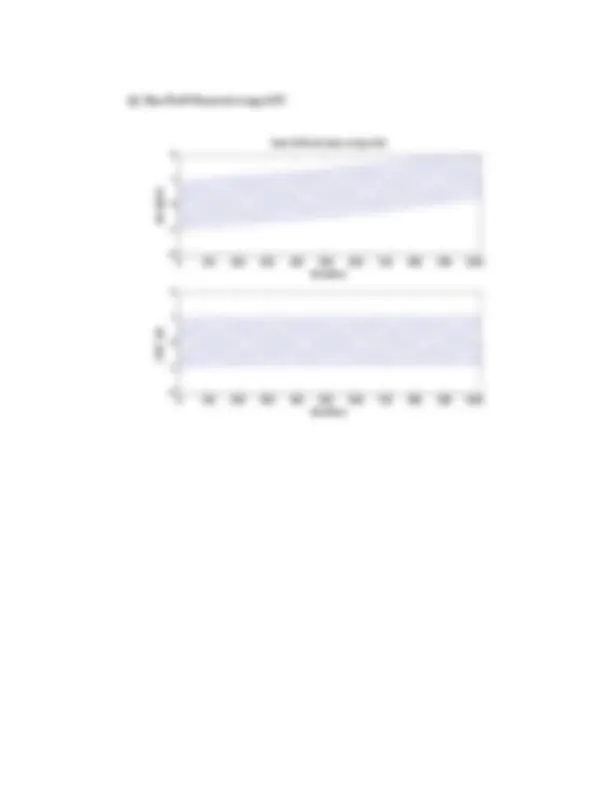
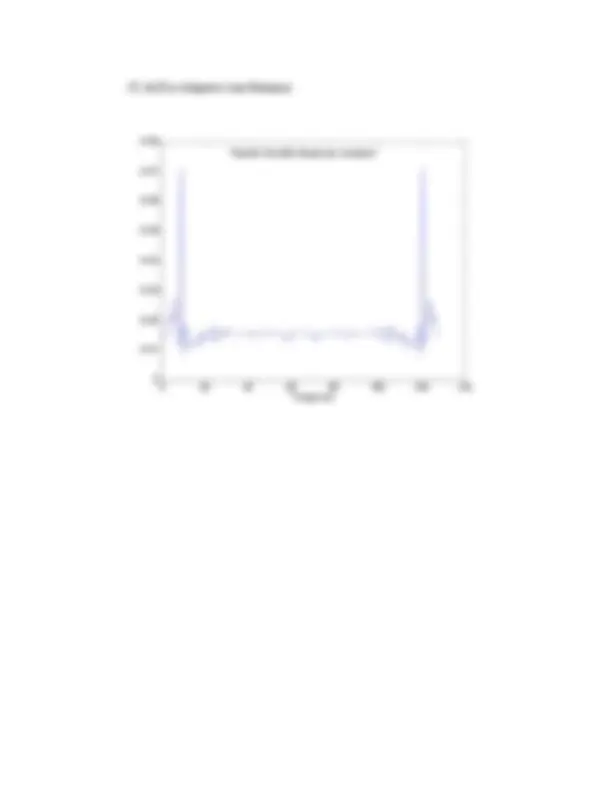
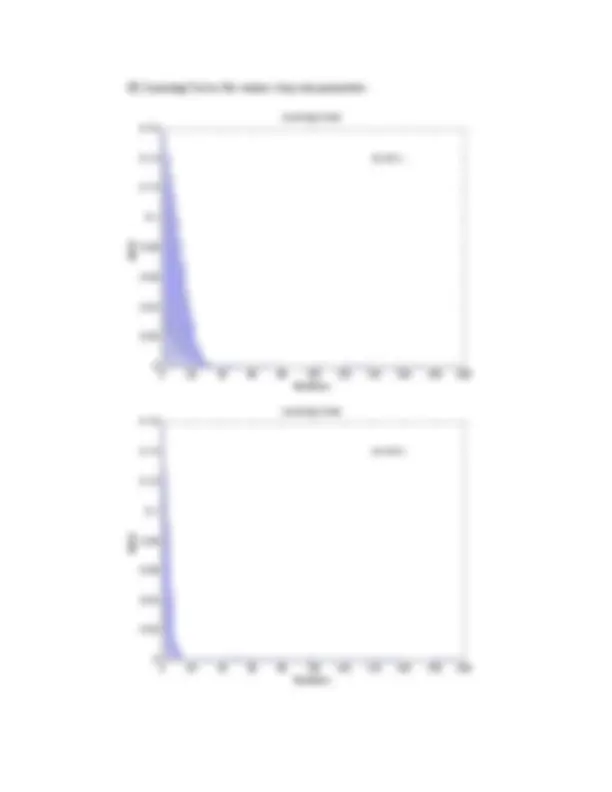
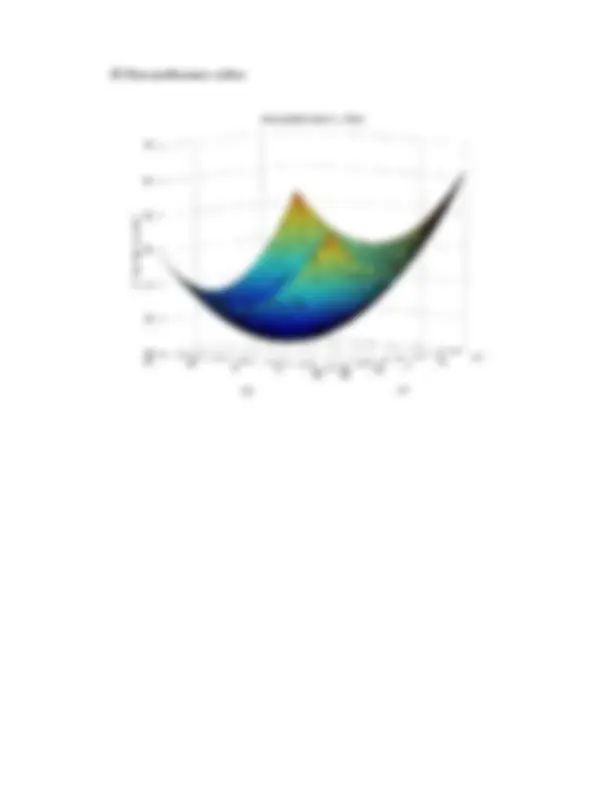
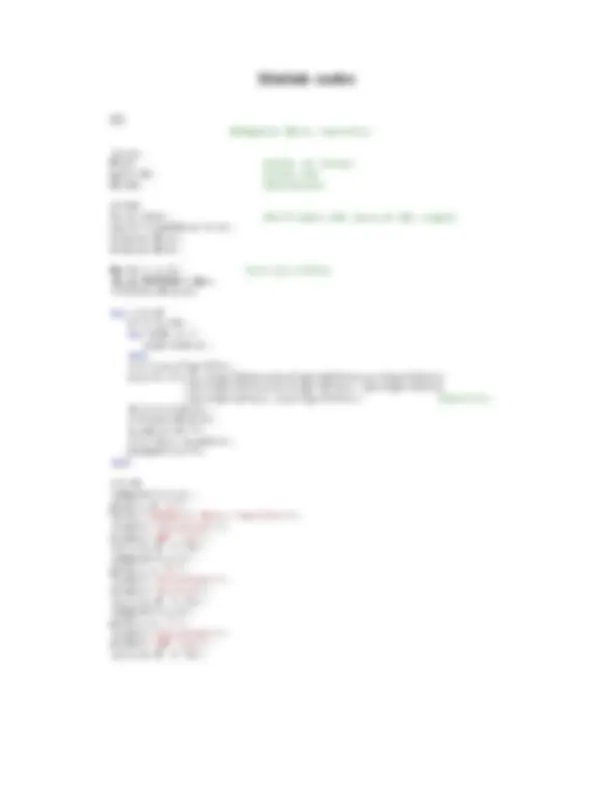
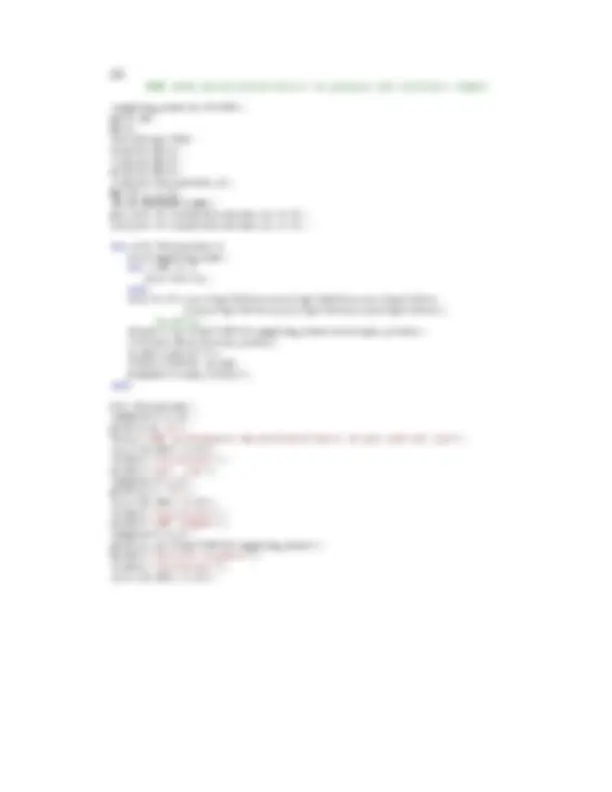
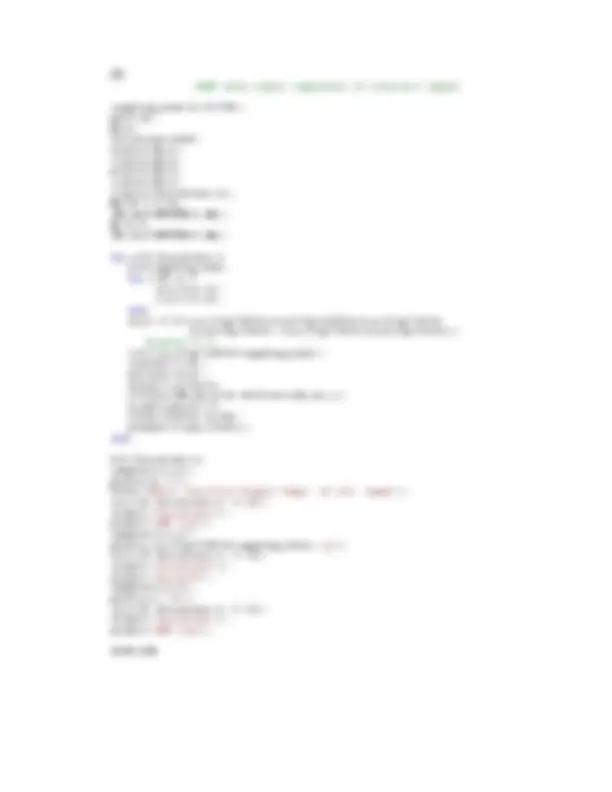
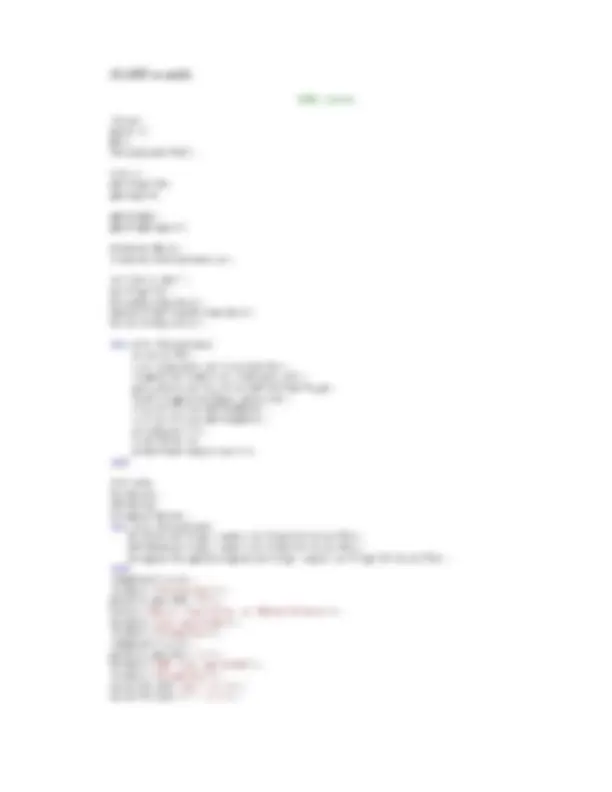
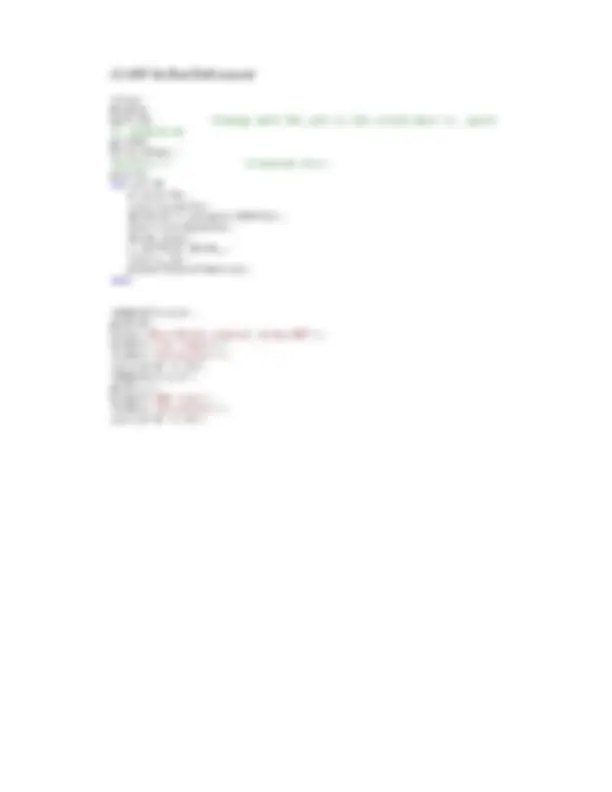
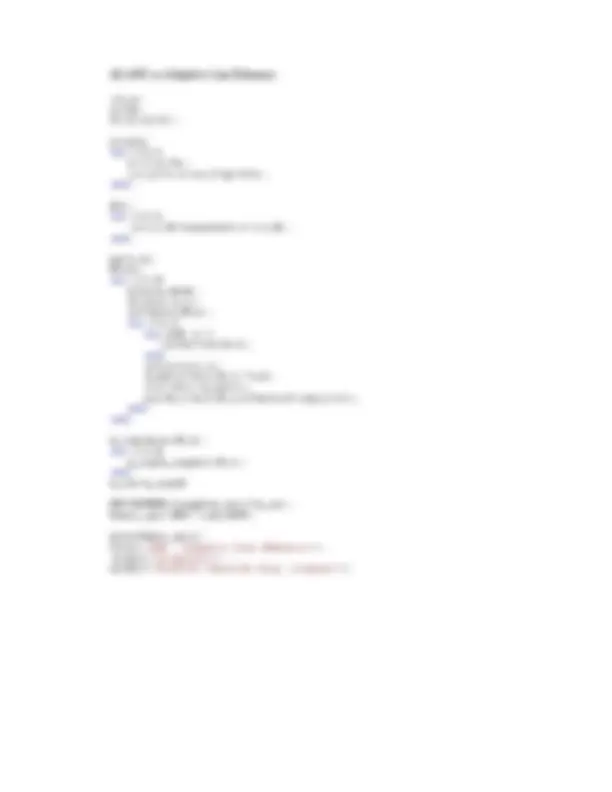


Study with the several resources on Docsity

Earn points by helping other students or get them with a premium plan


Prepare for your exams
Study with the several resources on Docsity

Earn points to download
Earn points by helping other students or get them with a premium plan
Community
Ask the community for help and clear up your study doubts
Discover the best universities in your country according to Docsity users
Free resources
Download our free guides on studying techniques, anxiety management strategies, and thesis advice from Docsity tutors
This Project involves the study of the principles of Adaptive Noise Cancellation
Typology: Exams
1 / 52

This page cannot be seen from the preview
Don't miss anything!













































Certificate
This is to certify that Aarti Singh, student of VIIIth semester B.E. (Electronics and Communication) carried out the Project on “Adaptive Noise Cancellation” under my guidance during a period of four months –February to May 2001.
It is also stated that this Project was carried out by her independently and that it has not been submitted before.
Prof. M.P. Tripathi Prof. Raj Senani AA Adddvvviiisssooorrr (((HHHOOODDD---EEECCCEEE)))
Abstract
This Project involves the study of the principles of Adaptive Noise Cancellation
(ANC) and its Applications. Adaptive oise Cancellation is an alternative technique
of estimating signals corrupted by additive noise or interference. Its advantage lies in
that, with no apriori estimates of signal or noise, levels of noise rejection are
attainable that would be difficult or impossible to achieve by other signal processing
methods of removing noise. Its cost, inevitably, is that it needs two inputs - a primary
input containing the corrupted signal and a reference input containing noise correlated
in some unknown way with the primary noise. The reference input is adaptively
filtered and subtracted from the primary input to obtain the signal estimate. Adaptive
filtering before subtraction allows the treatment of inputs that are deterministic or
stochastic, stationary or time-variable.
The effect of uncorrelated noises in primary and reference inputs, and presence of
signal components in the reference input on the ANC performance is investigated. It
is shown that in the absence of uncorrelated noises and when the reference is free of
signal, noise in the primary input can be essentially eliminated without signal
distortion. A configuration of the adaptive noise canceller that does not require a
reference input and is very useful many applications is also presented.
Various applications of the ANC are studied including an in depth quantitative
analysis of its use in canceling sinusoidal interferences as a notch filter, for bias or
low-frequency drift removal and as Adaptive line enhancer. Other applications dealt
qualitatively are use of ANC without a reference input for canceling periodic
interference, adaptive self-tuning filter, antenna sidelobe interference canceling,
cancellation of noise in speech signals, etc. Computer simulations for all cases are
carried out using Matlab software and experimental results are presented that illustrate
the usefulness of Adaptive Noise Canceling Technique.
I. Introduction
The usual method of estimating a signal corrupted by additive noise is to pass it through a filter that tends to suppress the noise while leaving the signal relatively unchanged i.e. direct filtering.
s + n Filter sˆ
The design of such filters is the domain of optimal filtering, which originated with the pioneering work of Wiener and was extended and enhanced by Kalman, Bucy and others.
Filters used for direct filtering can be either Fixed or Adaptive.
Noise Cancellation is a variation of optimal filtering that involves producing an estimate of the noise by filtering the reference input and then subtracting this noise estimate from the primary input containing both signal and noise.
s + n ∑ sˆ^ = s + (n - nˆ^ )
n 0 Filter nˆ
It makes use of an auxiliary or reference input which contains a correlated estimate of the noise to be cancelled. The reference can be obtained by placing one or more sensors in the noise field where the signal is absent or its strength is weak enough.
Subtracting noise from a received signal involves the risk of distorting the signal and if done improperly, it may lead to an increase in the noise level. This requires that the noise estimate ˆnshould be an exact replica of n. If it were possible to know the relationship between n and nˆ , or the characteristics of the channels transmitting noise from the noise source to the primary and reference inputs are known, it would be possible to make nˆ a close estimate of n by designing a fixed filter. However, since the characteristics of the transmission paths are not known and are unpredictable, filtering and subtraction are controlled by an adaptive process. Hence an adaptive
II. Adaptive oise Cancellation – Principles
primary o/p signal i/p s + n + signal sˆ source _
filter o/p ˆ n noise n 0 Adaptive filter source reference
ADAPTIVE NOISE CANCELLER
Fig. 1 Adaptive Noise Canceller
As shown in the figure, an Adaptive Noise Canceller (ANC) has two inputs – primary and reference. The primary input receives a signal s from the signal source that is corrupted by the presence of noise n uncorrelated with the signal. The reference input receives a noise n 0 uncorrelated with the signal but correlated in some way with the noise n. The noise no passes through a filter to produce an output^ ˆnthat is a close estimate of primary input noise. This noise estimate is subtracted from the corrupted signal to produce an estimate of the signal at sˆ , the ANC system output.
In noise canceling systems a practical objective is to produce a system output sˆ^ = s + n – nˆ that is a best fit in the least squares sense to the signal s. This objective is accomplished by feeding the system output back to the adaptive filter and adjusting the filter through an LMS adaptive algorithm to minimize total system output power. In other words the system output serves as the error signal for the adaptive process.
Assume that s, n 0 , n 1 and y are statistically stationary and have zero means. The signal s is uncorrelated with n 0 and n 1 , and n 1 is correlated with n 0. sˆ = s + n – nˆ ⇒ sˆ^2 = s^2 + (n - nˆ^ )^2 +2s(n - nˆ^ ) Taking expectation of both sides and realizing that s is uncorrelated with n 0 and nˆ^ , E[ sˆ 2 ] = E[s^2 ] + E[(n - nˆ )^2 ] + 2E[s(n - nˆ )] = E[s^2 ] + E[(n - nˆ^ )^2 ] The signal power E[s^2 ] will be unaffected as the filter is adjusted to minimize E[ sˆ 2 ]. ⇒ min E[ sˆ 2 ] = E[s^2 ] + min E[(n - nˆ )^2 ]
Thus, when the filter is adjusted to minimize the output noise power E[ sˆ^2 ], the output noise power E[(n - nˆ )^2 ] is also minimized. Since the signal in the output remains constant, therefore minimizing the total output power maximizes the output signal-to- noise ratio.
Since ( sˆ - s) = (n – nˆ )
This is equivalent to causing the output sˆ to be a best least squares estimate of the signal s.
IIA. Effect of uncorrelated noise in primary and reference
inputs
As seen in the previous section, the adaptive noise canceller works on the principle of correlation cancellation i.e., the ANC output contains the primary input signals with the component whose correlated estimate is available at the reference input, removed. Thus the ANC is capable of removing only that noise which is correlated with the reference input. Presence of uncorrelated noises in both primary and reference inputs degrades the performance of the ANC. Thus it is important to study the effect of these uncorrelated noises.
Uncorrelated noise in primary input
signal mo o/p source d = s + n + mo + signal sˆ _
filter o/p nˆ noise H(z) x Adaptive filter source
ADAPTIVE NOISE CANCELLER
Fig. 2 ANC with uncorrelated noise m 0 in primary input
The figure shows a single channel adaptive noise canceller with an uncorrelated noise mo present in the primary input. The primary input thus consists of a signal and two noises mo and n. The reference input consists of n* h( j ), where h(j) is the impulse response of the channel whose transfer function is H(z). The noises n and n* h( j ) have a common origin and hence are correlated with each other but are uncorrelated with s. The desired response d is thus s + mo + n. Assuming that the adaptive process has converged to the minimum mean square solution, the adaptive filter is now equivalent to a Wiener filter. The optimal unconstrained transfer function of the adaptive filter is given by (App.I)
W^ ∗(z) =
2
filter’s input and the desired response depends only on the mutually correlated primary and reference components and is given as
power spectrum yields
primary noise spectrum output noise spectrum
=
2
2
We define the ratios of the spectra of the uncorrelated to the spectra of the correlated noises at the primary and reference as
Rprin (z) =
and
Rrefn (z) =
2
respectively.
The output noise spectrum can be expressed accordingly as
H (z)
2 Rrefn(z) + 1
Rrefn(z) + 1
2
Rrefn (z) Rrefn (z) + 1
The ratio of output to the primary input noise power spectra can now be written as ρout (z)
ρpri (z)
(Rprin (z) + 1)(Rrefn(z) + 1) Rprin(z) + Rprin(z) Rrefn(z) + Rrefn(z)
This expression is a general representation of the ideal noise canceller performance in the presence of correlated and uncorrelated noises. It allows one to estimate the level of noise reduction to be expected with an ideal noise canceling system.
It is apparent from the above equation that the ability of a noise canceling system to reduce noise is limited by the uncorrelated-to-correlated noise density ratios at the primary and reference inputs. The smaller are Rprin(z) and Rrefn(z), the greater will be the ratio of signal-to-noise density ratios at the output and the primary input i.e.
low levels of uncorrelated noise in both primary and reference inputs is thus emphasized.
∆
∆
IIB. Effect of Signal Components in the reference input
Often low-level signal components may be present in the reference input. The adaptive noise canceller is a correlation canceller, as mentioned previously and hence presence of signal components in the reference input will cause some cancellation of the signal also. This also causes degradation of the ANC system performance. Since the reference input is usually obtained from points in the noise filed where the signal strength is small, it becomes essential to investigate whether the signal distortion due to reference signal components can outweigh the improvement in the signal-to noise ratio provided by the ANC.
primary input dj + output sj -
nj xj yj H(z) W*(z) reference εj input
Fig. 4 ANC with signal components in reference input
The figure shows an adaptive noise canceller that contains signal components in the reference input, propagated through a channel with transfer function J(z). If the
to-noise density ratio at the primary input is
The spectrum of the signal component in the reference input is
2
and that of the noise component is
2
Therefore, the signal-to-noise density ratio at the reference input is thus
2
2
The spectrum of the reference input x can be written as
2
2
and the cross spectrum between the reference input x and the primary input d is given by
When the adaptive process has converged, the unconstrained Weiner filter transfer function is thus given by
W*(z) =
2
2
J(z)
∆
2
2
2
and that of noise component is similarly
2
2
2
The output signal-to-noise density ratio is thus
2
2
2
From the expression for signal-to-noise density ratio at reference input, this can be written as
This shows that the signal-to-noise density ratio at the noise canceller output is simply the reciprocal at all frequencies of the signal-to-noise density ratio at the reference input, i.e. the lower the signal components in the reference, the higher is the signal-to- noise density ratio in the output.
Output noise:
When |J(z)| is small, the expression for output noise spectra reduces to
2
In terms of signal-to-noise density ratios at reference and primary inputs,
The dependence of output noise on these three factors is explained as under:
noise spectrum, which is obvious.
IIC. Use of A C without a reference signal
An important and attractive use of ANC is using it without a reference signal. This is possible for the case when one of the signal and noise is narrowband and the other broadband. This is particularly useful for applications where it is difficult or impossible to obtain the reference signal.
sj + nj broadband primary dj + output i/p -
reference i/p xj W*(z) narrowband output delay
ADAPTIVE NOISE CANCELLER
Fig. 5 ANC without reference input
In the case where signal is narrowband and noise is broadband, or signal is broadband and noise is narrowband, a delayed version of the input signal can be used as the reference input. This is because a broadband signal is not correlated to previous sample values unlike a narrowband signal. We only need to insure that the delay introduced should be greater than the decorrelation-time of the broadband signal and less than the decorrelation-time of the narrowband signal. i.e. τd (BB) < delay < τd (NB)
This concept is applied to a number of problems -
noise canceller dj output primary + i/p synchronous - samplers w1j x1j reference i/p yj adaptive Ccos(ω 0 t +φ) w2j filter x2j output 900 delay LMS εj Sampling period = T Algorithm x1j=Ccos(ω 0 t +φ) x2j = Csin(ω 0 t +φ) Fig. 6 Single-frequency adaptive noise canceller
The primary input consists of the signal corrupted by a sinusoidal interference of frequency ω 0. The reference input is assumed to be of the form Ccos(ω 0 t + φ), where C and φ are arbitrary i.e. the reference input contains the same frequency as the interference while its magnitude and phase may be arbitrary. The primary and reference inputs are sampled at the frequency Ω = 2π/Τ rad/s. The two tap inputs are obtained by sampling the reference input directly and sampling a 90o^ shifted version of the reference as shown in the figure above.
To observe the notching operation of the noise canceller, we derive an expression for the transfer function of the system from the primary input to the ANC output. For this purpose, a flow graph representation of the noise canceller system using the LMS algorithm is constructed. w1j + 1 w1j D y1j
x1j K x2j = C cos(ωojT + φ) + G C yj εj w2j + 1 w2j +
B H 1 z -1^ y2j J I x2j
M x2j = C sin(ωojT + φ)
Fig. 7 Flow diagram representation
2 μ (^) Σ
2 μ (^) Σ
dj
1 z –^1 E F
The LMS weight update equations are given by
The sampled tap-weight inputs are x1j = C cos(ωoTj + φ) and x2j = Csin(ωoTj + φ)
The first step in the analysis is to obtain the isolated impulse response from the error εj, point C, to the filter output, point G, with the feedback loop from point G to point B broken. Let an impulse of amplitude unity be applied at point C at discrete time j = k; that is, εj = δ( j - k) where δ( j - k) is a unit impulse.
The response at point D is then εj x1j = Ccos(ωokT + φ) for j ≠ k and zero for j = k which is the input impulse scaled in amplitude by the instantaneous value of x1j at j = k. The signal flow path from point D to point E is that of a digital integrator with transfer function 2μ/(z-1) and impulse response 2μu(j-1),where u(j) is a unit-step function.
Convolving 2μu( j-1) with εj x1j yields the response at point E: w1j = 2μCcos(ωokT + φ) where j ≥ k + 1. When the scaled and delayed step function is multiplied by x1j, the response at point F is obtained: y 1 j = 2μC^2 cos(ωojT + φ) cos(ωokT + φ) where j ≥ k + 1. The corresponding response at J may be obtained in a similar manner y 2 j = 2μC^2 sin(ωojT + φ) sin(ωokT + φ)
Combining these equations ,we obtain the response at filter output G: yj = 2μC^2 u( j - k - 1) cosωoT(j - k)
We now set to derive the linear transfer function for the noise canceller. When the time k is set equal to zero, the unit impulse response of the linear time-invariant signal-flow path from C to G is given as yj = 2μC^2 u( j - 1) cosωojT and the transfer funcxtion of this path is
G (z) = 2μC^2
z( z - cosωoT) z^2 - 2z cosωoT + 1
This can be expressed in terms of a radian sampling frequency Ω = 2π/T as
G (z) =
z^2 - 2z cos(2πωo Ω-1)+ 1
Corresponding poles and zeros are separated by a distance approximately equal to μC^2. The arc length along the unit circle (centered at the position of a zero) spanning the distance between half-power points is approximately 2 μC^2. This length corresponds to a notch bandwidth of BW = μC^2 Ω/π = 2μC^2 /T
The Q of the notch is determined by the ratio of the center frequency to the bandwidth:
Q = ω 0 /BW =
ω 0 π μC^2 Ω
The single-frequency noise canceller is, therefore, equivalent to a stable notch filter when the input is a pure cosine wave. The depth of the null achievable is generally superior to that of a fixed digital or analog filter because the adaptive process maintains the null exactly at the reference frequency.
Multiple-frequency notch filter:
This discussion can be readily extended to the case of a multiple-frequency noise canceller. The formation of multiple notches is achieved by using an adaptive filter with multiple weights. Two weights are required for each sinusoid to achieve the necessary filter gain and phase. Uncorrelated broadband noise superposed on the reference input creates a need for additional weights. Suppose the reference is a sum of M sinusoids
M
m
Cm mjT m 1
cos(ω θ )
At the ith^ tap-weight input of the transversal tapped delay-line filter of order ,
cos( [ 1 ] ) 1
m m
M
m
i=1…
M
m
Cm mjT im 1
cos(ω θ )
where θ (^) im = θm− ωm[i − 1 ]T.
The filter output at the ith^ tap-weight yij is given by yij = wij xij
Proceeding as before, we get a similar equation for wij as,
M
m
wij Cm mkT im 1
∴ 2 cos( ) cos( ) 1 1
n in
M
m
M
n
yij = μ (^) ∑ Cm ωmkT+θim∑Cn ω kT+ θ = =
The overall filter output is given as
i
y (^) j yij 1 Substituting and taking the Z-transform of both sides, gives the transfer function G(z) as
∑∑ ∑ = = − − =
− −
− +
M
m
m im i
M
n (^) n
n n in in C z T z
Cz T z Y z Gz 1 1 1 2 1
1 1 cos 1 2 cos
[cos( ) cos ]
Since the input is a unit impulse and time of applying the pulse k is set to zero.
The denominator of G(z) is of the form
n
z n T z 1
( 1 2 1 cos ω^2 )
Therefore, poles of G(z) are located at z = exp( ±i 2 πωnT ) n = 1…M
i.e. poles are located at each of the reference frequencies. Since poles of G(z) are the zeros of H(z), the overall system function has zeros at all reference frequencies i.e. a notch is formed at each of the reference sinusoidal frequencies.
IIIB. Bias or low-frequency drift Canceling using Adaptive
oise Canceller
The use of a bias weight in an adaptive filter to cancel low-frequency drift in the primary input is a special case of notch filtering with the notch at zero frequency. A bias weight is incorporated to cancel dc level or bias and hence is fed with a reference input set to a constant value of one. The value of the weight is updated to match the dc level to be cancelled. Because there is no need to match the phase of the signal, only one weight is needed.
sj+drift + ∑ output wj - +1 yj
εj LMS Algorithm
Fig. 9 ANC as bias/low-frequency drift canceller
The transfer function from the primary input to the noise canceller output is now derived. The expression of the output of the adaptive filter yj is given by yj = wj .1 = wj The bias weight w is updated according to the LMS update equation wj+1 = wj + 2μ(εj .1) ⇒ yj+1 = yj +2μ(dj – yj) = (1-2μ)yj +2μdj Taking the z-transform of both the sides yields the steady-state solution:
Y(z) =
2 μ z - (1 - 2μ)
D(z)
Z-transform of the error signal is E(z) = D(z)- Y(z)
=
z - 1 z - (1 - 2μ)D(z)
dj